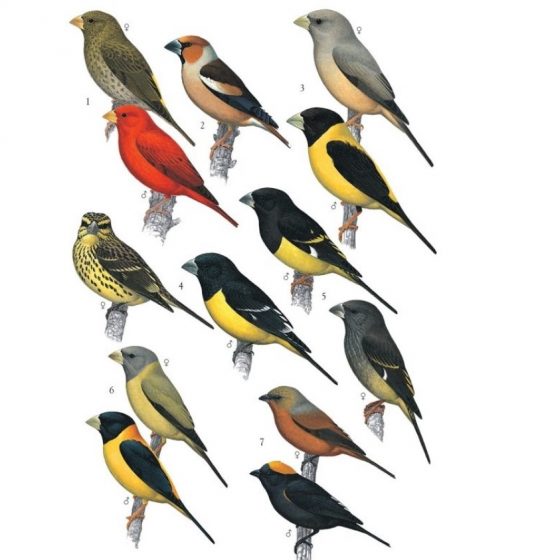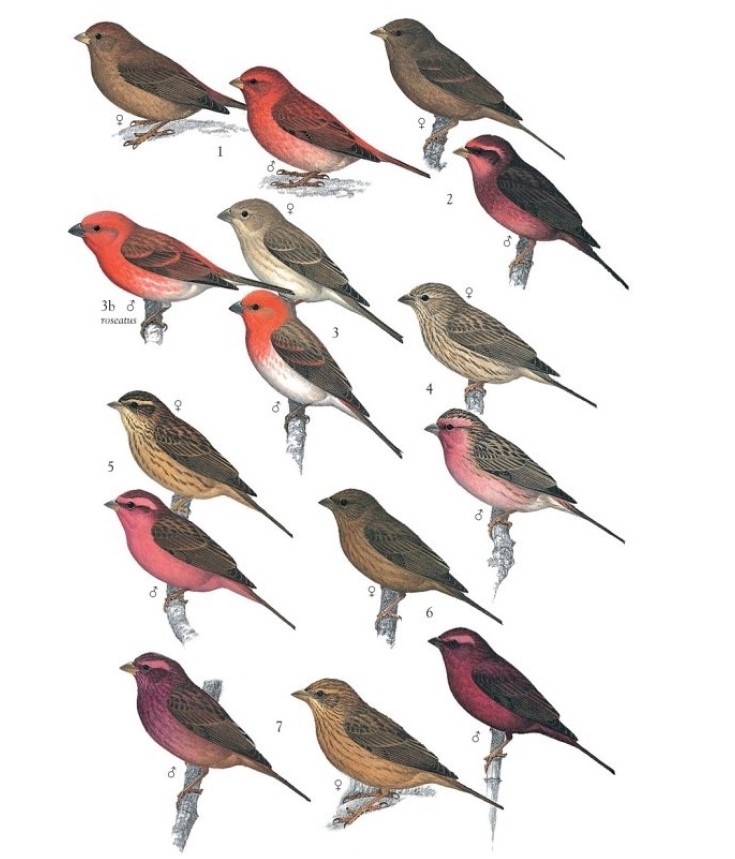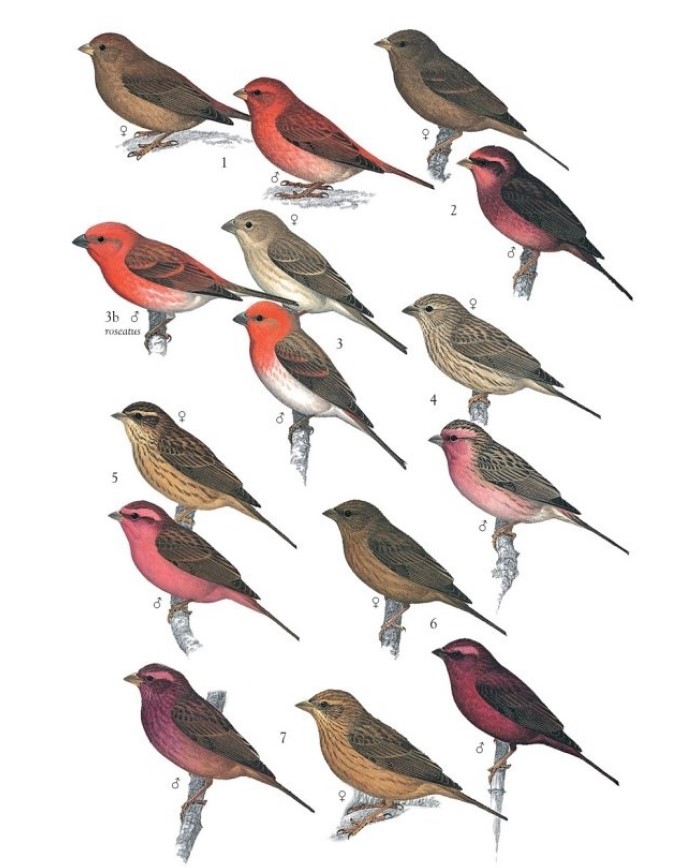8 CRIMSON-BROWED FINCH (RED-HEADED ROSEFINCH) “Propyrrhula subhimachala” 19cm FIELD NOTES: Unobtrusive. Forages on the ground or in bushes and low trees, usually in pairs or small parties. VOICE: A bright variable warble, which may include a ter-ter-ter phrase. The call is a sparrow-like chirp. HABITAT: Dense, high-altitude scrub; winters in thick undergrowth in forests. DISTRIBUTION: Resident from C to E Himalayas; winter visitor to the NE.
16 SPECTACLED FINCH “Callacanthis burtoni” 17cm FIELD NOTES: Forages on the forest floor or under bushes, retreats to sit in trees when disturbed; generally, in pairs or small parties. VOICE: A loud trilling il-til-til also, a monotonous, repeated single note. Calls include a clear tew-tew, a loud pwee or chew-we, often followed by a pweeu, pweuweu or chipeweu; also utters a light chip and when alarmed a rising uh-eh or twee-yeh. HABITAT: Open mixed forest. DISTRIBUTION: Resident in the Himalayas.
/ month
placeholder text
Post List
Editor's Picks
The Maiden Tower of Baku, Azerbaijan
The Maiden Tower, also called “Giz Galasi” is located...
Artist Turns Old Keys and Coins Into Recycled Art
Well, there’d be numerous things at your home, that...
Time Capsule Apartment Untouched for 70 Years
Time Capsule Apartment Untouched for 70 Years. A lot...
Dentist Saves Beak of Bald Eagle Suffering from Gunshot Wound
Exceptional Dentist Saves Beak of Bald Eagle Suffering from...
Mysterious Wheel Of Giants is as Old as Stonehenge
The mysterious stone circle Wheel of Giants in the...
Bring Your Walls to Life with This Plant Wall Trophy
Bring Your Walls to Life with This Plant Wall...
Don't Miss
Larkspur: A Delicate Long Lasting Cut Flower
Larkspur known scientifically as Delphinium is a delicate long-lasting...
Playful Polar Bears having fun in the field of Wild Flowers
When you think of polar bears mostly you often...
Coral Reef Destruction: How Human Activities Are Threatening Ocean Life
The coral reef destruction is badly impacted due to...
Flying Car – A New Dimension of Personal Freedom
Flying Car - A New Dimension of Personal Freedom....
The Beauty of Red-winged Parrot
The red-winged Parrot (Aprosmictus erythropterus) closely related to the...
Gorgeous Watercolors Merge Nature with Chinese Calligraphy
Gorgeous Watercolors Merge Nature with Chinese Calligraphy - For...
Xantus’s Hummingbird (Basilinna xantusii)
DESCRIPTION:-
Xantus’s Hummingbird (Basilinna xantusii) species are very closely...
Charismatic Planet © 2024 . All Rights Reserved.










